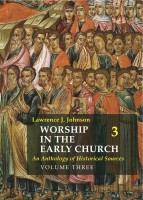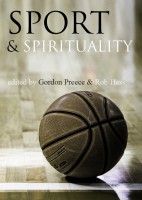Description
“My Journal of the Council offers a riveting first-hand assessment of the dynamics, disputes, and decisions of the Council. At the same time, this volume provides a rare glimpse into the personal and spiritual cost of Congar’s love of truth and his commitment to hand on the Church’s authentic Tradition as a living heritage of faith.” Mary Catherine Hilkert, OP Professor of Theology University of Notre Dame “Fr. Yves Congar was the most important and influential theologian at the Second Vatican Council. The journal that he wrote on the spot nearly every day provides entry not only to his ideas and feelings but to the dynamics at work as the Council accomplished a work of renewal and reform for which he had himself worked and suffered for decades before. This is indispensable reading for anyone who wishes to understand the texts, and the drama, of Vatican II.” Joseph A. Komonchak Professor Emeritus, Historical and Systematic Theology, The Catholic University of America Editor of the English version of The History of Vatican II, Giuseppe Alberigo (ed.) “Yves Congar’s diaries give us an intimate insight into the most important event in the life of the Catholic Church in the twentieth century. Having been marginalized and silenced because of his theological views, Congar was summoned to Rome to be a crucial actor in the Council. He records his views of the participants with wonderful frankness and gives us access to the dramatic negotiations and maneuvers that took place behind the scenes. It is impossible to put it down. It unveils the genesis of the Council documents that changed the Church.” Timothy Radcliffe, OP Former Master General of the Dominican Order
Review by Paul Colins

A young Fr Ratzinger and Fr Congar OP during Vatican II
Yves Congar: My Journal of the Council, Adelaide: ATF Theology, 2012. lxi and 979 pp. ISBN: 978-192181744-1. RRP: A$69.95.
It’s rare that one of the century’s most important Catholic theologians has you laughing out loud. But that is precisely what Dominican Yves Congar often achieves in his massive My Journal of the Council, newly translated into English. Congar is without doubt one of the twentieth century’s most important theologians and his influence on the Second Vatican Council’s (1962-5) vision of the nature of the church is definitive.
The Journal is his personal record of Vatican II. It’s about the people he met and the contributions he made to all of the most important documents of the Council. Few people had his level of access to the inner workings of this immense international assembly and his knowledge of the personalities involved. Many of his characterizations of people are very funny and deliciously critical.
Born in 1904 in Sedan in northern France, he joined the Dominicans, was ordained in 1930, served a medical orderly in World War Two, was a prisoner of war in Germany from 1940-5 and after the war became one of the most creative minds in French theology. From early in his career he was deeply interested in the history of the church and its government and was profoundly shaped by his study of past models of how the church conceived of itself and interacted with culture. Congar’s theology looked outward to society and to the communication of the Gospel.
That is why ecumenism was so important to him. Throughout the 1930s he was deeply involved with both Orthodox and Protestant churches and theologians and was the author of Chrétiens Désunis (Divied Christians (1938)). After the war he published True and False Reform in the Church (1950) which was censured by Rome and he was ordered to withdraw the book. In 1953 he published his definitive study Lay People in the Church. He argued that the true tradition of the church was often buried under recent accretions that were ‘less profound and of lesser value.’
In the mid-1950s he lived under threat from the inquisitorial Holy Office and was removed from lecturing, publishing and teaching. He was exiled to Jerusalem and Cambridge. But in January 1959 Pope John XXIII (1958-63) announced the Second Vatican Council.
Given his previous experiences with Rome, Congar had little time for Vatican and papalist theology. Speaking of Pius XII and the curia he says they ‘produced a bottomless paternalism and stupidity.’ Nevertheless he was eventually appointed peritus (expert) on the Doctrinal Commission preparing for the Council presided-over by Cardinal Alfredo Ottaviani. Despite his appointment Congar said that ‘I am still not free of the fears attached to a man who is suspect, sanctioned, judged, discriminated against.’
But as the Council got underway he became increasingly influential working on formulating three of the major documents and six other documents issued by the Council. The Journal details his extensive formulation-work and the many people with whom he worked. Underpinning his attitude was that the church was being challenged ‘by the world to rejoin it in order to speak validly of Jesus Christ.’ From his perspective the key issues ‘are being addressed to the church [from] … the world and … Others’ – ‘Others’ here referring to other non-Catholic Christians.
He felt that historically the Council came twenty-five years ‘too early’; that is only the youngest bishops had imbibed the renewed theology and historical and scriptural studies that underpinned the Council’s documents. From today’s perspective it is significant that he thought that the Council ‘had stopped half-way on many questions. It began a task that is not completed.’
Congar was rather reserved and often in poor health. At the beginning in 1962-3 he was ‘enormously depressed’ that John XXIII had kept all Pius XII’s Vatican ‘old guard’ in place. ‘The Council’, he said, ‘was to be mastered, dominated, emasculated [by them] as soon as it had been born and before it had ever lived.’
The Journal is full of fascinating personal details like his constant travel back and forth from Paris to Rome by train and increasingly by plane. Much of the time, despite trouble with his legs, he had to walk around Rome or cadge a lift in a car (only groups seemed to go in taxis). His work was often interrupted by bishops and others trying to see him, including ‘a young French couple on their honeymoon who didn’t know where to stay.’ Congar could be very impatient and often found the Council’s procedures very slow and frustrating.
Among his visitors was Archbishop Guilford Young from Hobart whom he describes as ‘young [and a] mixture of straight-talking and solemnity … He told me how terribly disappointed he was in the schemata [presented by the Curia] and in the [opening] ceremony in St Peters, indeed almost to the point of being scandalized.’ He also occasionally mentions other Australians like Cardinal Norman Gilroy and speeches by Bishop Thomas Muldoon and Archbishop James Carroll who he says had ‘a nasal tone, slow, a bit soporific.’
He couldn’t stand the Dominican Master-General and later cardinal Michael Browne. ‘Browne is a mule’, he says. He describes the Jesuit historian (also later cardinal) Jean Daniélou as ‘very superficial and banal’, and the theologian René Laurentin, who specialised in Mariology, ‘seemed to me to have become impossible, buzzing about like a bee in a bottle, pouncing on everything that he could make use of, everything that he can turn to his own advantage. If I did not know him I would say: a schemer.’ Of Hans Küng he says he is ‘full of intelligence, health, youth and insistent demands. He is extremely critical … He charges at things; he goes straight ahead like an arrow.’ There are many references to bishops leaving the aula (council hall) for the coffee bar when bishops were boring or spoke for too long.
He pulls no punches describing Cardinal Giuseppe Pizzardo, head of the Roman Congregation of Seminaries and Universities. ‘That an imbecile, a sub-human like Pizzardo should be in charge of the department for universities and seminaries is scandalous and extremely serious.’ He was shocked that ‘this wretched freak, this sub-mediocrity with no culture, no horizon, no humanity … This Pizzardo, who has red pyjamas and underpants, … who haggles over the purchase of a newspaper … This man in charge of the curial department for studies and research’! And Congar accuses Küng of being ‘extremely critical’!
The Journal’s great strength is the clear explanation that it often gives of the core theological issues facing the Council. Running through all four sessions is the ecclesiological tension between what Congar calls the ‘PAPA pole’ and the ‘ECCLESIA pole’, that is the people of God pole. He defines the ‘Papa pole’ as ‘a simplistic and false ecclesiology according to which everything is derived from the pope’ and the church is ‘a vast centralised administration.’ During the first session he commented that ‘this tension is latent in the council and it is more than likely that one day it will come into the open.’ It certainly did on several occasions at Vatican II and it remains a problem that has yet to be resolved in the government of the Church. In fact it is possibly even worse now than it was before the council because modern means of communication have made papal centralization much easier. With the kind of papal travel we had the likes of John Paul II we now have a kind of ‘omnipresent’ papacy.
The Journal is well translated into excellent idiomatic English with informative and helpful footnotes. Several excellent introductory essays help to contextualise Congar both theologically and historically. This book will be an indispensible adjunct for anyone seriously studying Vatican II. We are very much in the debt of ATF Theology who got this very large book translated and published in English.
Congar lived for another thirty years after Vatican II. He died in 1995 after having been made a cardinal the year before by John Paul II. No doubt he would have found such an appointment ironic.
Paul Collins,
Canberra. ACT.
29 May 2012.





